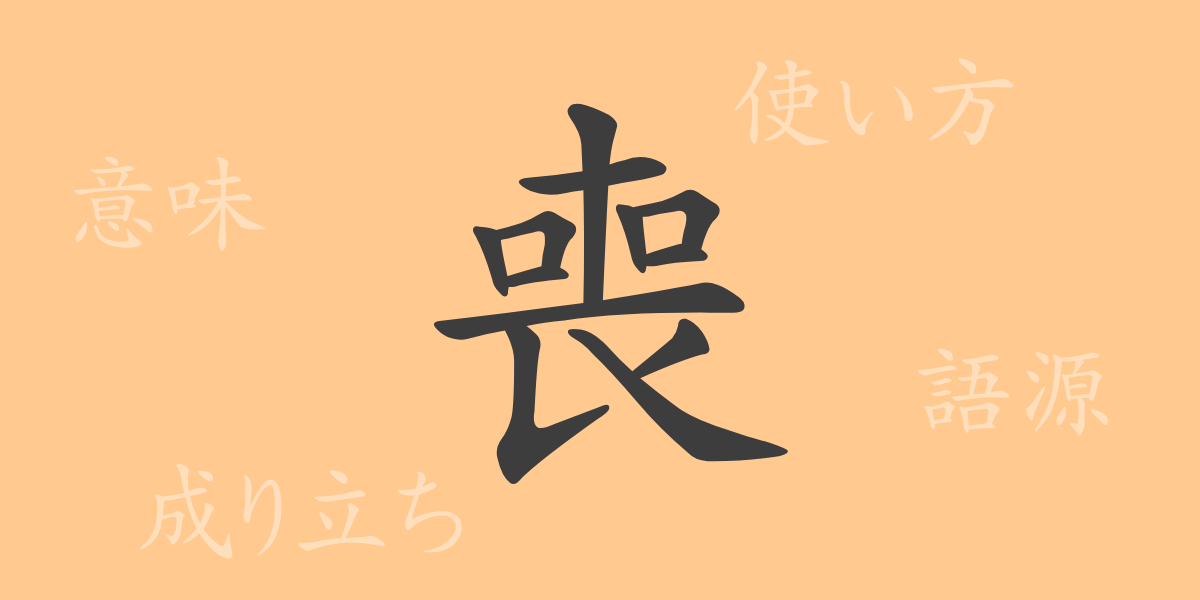The Kanji “喪” (もう, mō) is deeply embedded in Japanese written expression, representing profound meanings related to life’s emotional and cultural aspects. This article explores the Kanji “喪”, from its origins and meanings to its use in modern Japanese and its significant cultural impact. Understanding “喪” as a commonly used Kanji enriches our insight into the Japanese language.
Origins of 喪 (もう – Mō)
The Kanji “喪” originated from ancient Chinese pictographs. It was initially formed by combining “歹” (がい, gai) symbolizing “death” with “木” (き, ki) indicating “wood,” representing a corpse placed on wood. Over time, the usage of “喪” evolved to encompass rituals related to death and broader concepts of loss, making its way into Japan where it developed unique meanings.
Meaning and Usage of 喪 (もう – Mō)
The Kanji “喪” primarily conveys grief associated with death and the broader sense of loss. It is used to express the sorrow of losing family or close ones (喪に服す), or the feeling of losing something valuable (喪失感). Additionally, it serves in metaphoric expressions to signify the loss or absence of various entities or qualities.
Readings, Stroke Count, and Radical of 喪 (もう – Mō)
“喪” is a distinctive Kanji within the Japanese script, known for its various readings and structural details:
- Readings: On’yomi (音読み) “ソウ” (Sō), Kun’yomi (訓読み) “も” (mo)
- Stroke Count: “喪” comprises 12 strokes.
- Radical: The radical of “喪” is “口” (くち, kuchi).
Phrases and Proverbs Involving 喪 (もう – Mō)
Many idioms and phrases include the Kanji “喪,” each reflecting deep cultural and traditional meanings:
- 喪中 (もちゅう, mochū): A period of mourning after a family member’s death.
- 喪失 (そうしつ, sōshitsu): The state of having lost something important.
- 喪服 (もふく, mofuku): The black attire worn during funerals.
These terms show the profound cultural and customary significance embedded in the Kanji “喪” within Japanese language.
Conclusion on 喪 (もう – Mō)
The Kanji “喪” symbolizes fundamental human emotions such as life, death, joy, and sorrow. This article has provided a deeper understanding of its etymology, meanings, usage, and cultural background. The application of “喪” in Japanese enriches our appreciation of the language’s depth, supported by a rich historical and cultural foundation. In daily life, contemplating the profound meanings embedded in this Kanji can enhance our mindful use of words.

























